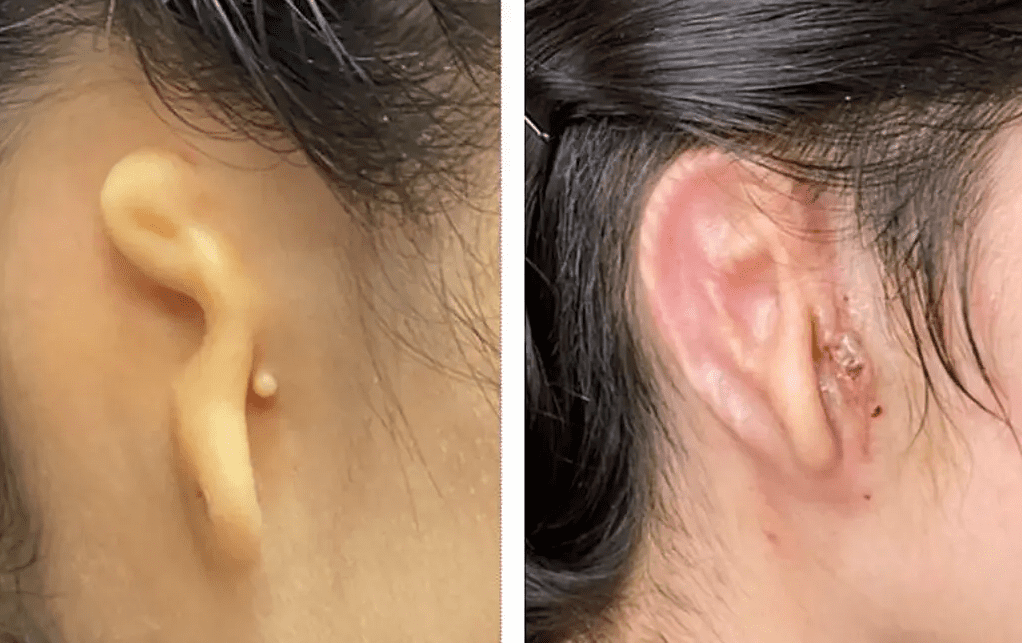A collaboration between doctors and US-based regenerative medicine company 3DBio Therapeutics has seen the first successful implant of a 3D-printed ear made from human cells into a living patient.

This transplant was one part of a larger cutting-edge effort: the first clinical trial of human-cell-3D-printed grafts. This event marks a major step toward widespread artificial tissue implants and tissue engineering. So far, the results are encouraging and, if everything continues along this path, we’re bound to see other types of tissue being trialed in a similar fashion.
Earmarked
“If everything goes as planned, this will revolutionize the way this is done,” said Arturo Bonilla, the lead surgeon on the ear reconstruction procedure, told The New York Times.
The condition this ear was meant to address is known as microtia, which involves the underdevelopment or entire absence of one or both ears. Around 1,500 people are born with the condition each year in the U.S. alone, and there are currently precious few options for treatment. Patients can opt for grafts made either from synthetic materials, or ones sculpted from tissue harvested from their ribcage.
This study is aiming to try and solve that issue by paving the way toward personalized tissue implants that can replace the ears of such patients. It involves taking samples from the patient’s existing ear tissue, from which cartilage cells are harvested. These are then multiplied in cultures and used as bioink to 3D-print into the shape of a new ear. This is then grafted onto the patient.
Such 3D printed ears keep regenerating cartilage over the patient’s lifetimes and are less likely to be rejected as they are made from their own cells.
The results of the woman’s surgery were made public in a news release. Although the company has not made the technical details of the process to the public, citing proprietary concerns, 3DBio says that federal regulations have already reviewed the trial and the data would be published in a peer-reviewed medical journal upon its completion.
So far, the trial is still ongoing with 11 patients. It is still possible that the transplants will fail or lead to unforeseen health complications, even if these outcomes are very unlikely.
In the future, the company aims to explore how other replacement body parts can be created via 3D printing, including spinal discs, noses, knee menisci, rotator cuffs, or replacement breast tissue. In the long term, they hope this approach can even create far more complex organs like livers, kidneys, or pancreases, for life-saving transplants.









